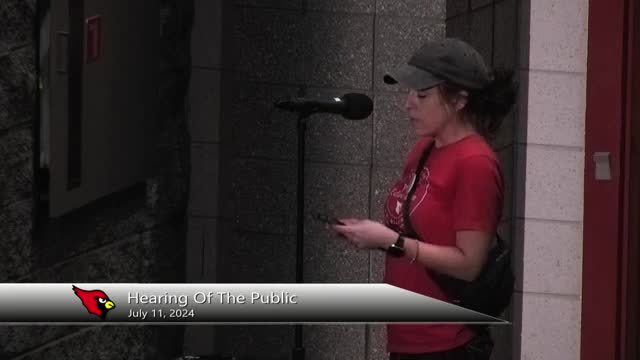School Board Meeting Erupts Over Safety and Free Speech Concerns
July 12, 2024 | Mentor Exempted Village, School Districts, Ohio

This article was created by AI summarizing key points discussed. AI makes mistakes, so for full details and context, please refer to the video of the full meeting. Please report any errors so we can fix them. Report an error »

During a recent school board meeting, discussions centered on student discipline, public participation, and safety concerns within schools, highlighting a divide among board members and community members.
Board member Mr. Heath proposed exploring alternative disciplinary solutions for students who repeatedly misbehave, emphasizing the importance of counseling and support rather than exclusion. He noted that many behavioral issues stem from home environments and stressed the need for public schools to uphold the principle of \"no child left behind.\" This sentiment was echoed by other attendees who supported the idea of providing every child with a fair chance to succeed.
However, tensions arose regarding the board's approach to public participation. Some members criticized their colleagues for seeking additional public comments while simultaneously limiting free speech on social media platforms. One speaker expressed frustration over the perceived hypocrisy, suggesting that the board's calls for dialogue were selective and aimed at undermining the superintendent rather than fostering genuine community engagement.
Safety in schools was another contentious topic, with concerns raised about policies allowing boys in girls' restrooms and locker rooms. A speaker referenced past incidents involving individuals who identified as female but had a history of violence against women, arguing that such policies could endanger students. This perspective was met with mixed reactions, as other community members voiced their support for inclusivity and the need for a balanced approach to safety and rights.
The meeting also touched on the issue of book banning, with some community members advocating for an opt-in system for parents who wish to restrict their children's reading materials, rather than imposing blanket bans. This proposal aimed to respect parental choice while allowing broader access to literature for other students.
Overall, the meeting underscored the complexities of managing student discipline, ensuring safety, and fostering open dialogue within the school community, revealing deep divisions in opinions on how best to serve the needs of students and families.
Board member Mr. Heath proposed exploring alternative disciplinary solutions for students who repeatedly misbehave, emphasizing the importance of counseling and support rather than exclusion. He noted that many behavioral issues stem from home environments and stressed the need for public schools to uphold the principle of \"no child left behind.\" This sentiment was echoed by other attendees who supported the idea of providing every child with a fair chance to succeed.
However, tensions arose regarding the board's approach to public participation. Some members criticized their colleagues for seeking additional public comments while simultaneously limiting free speech on social media platforms. One speaker expressed frustration over the perceived hypocrisy, suggesting that the board's calls for dialogue were selective and aimed at undermining the superintendent rather than fostering genuine community engagement.
Safety in schools was another contentious topic, with concerns raised about policies allowing boys in girls' restrooms and locker rooms. A speaker referenced past incidents involving individuals who identified as female but had a history of violence against women, arguing that such policies could endanger students. This perspective was met with mixed reactions, as other community members voiced their support for inclusivity and the need for a balanced approach to safety and rights.
The meeting also touched on the issue of book banning, with some community members advocating for an opt-in system for parents who wish to restrict their children's reading materials, rather than imposing blanket bans. This proposal aimed to respect parental choice while allowing broader access to literature for other students.
Overall, the meeting underscored the complexities of managing student discipline, ensuring safety, and fostering open dialogue within the school community, revealing deep divisions in opinions on how best to serve the needs of students and families.
View full meeting
This article is based on a recent meeting—watch the full video and explore the complete transcript for deeper insights into the discussion.
View full meeting
